Are You Enabling Your Overweight Dog?
Labradors get a bad rap for being overweight and loving food too much. And while that may be true, 9 times out of 10 it’s the owner that is the problem.
Now, before you send me nastygrams, let me just take a few moments to explain. I heard a person talking about those shows on TV where people lose a lot of weight. Many of them show them bedridden with food all around them. Many of it, their family is bringing to them. And you think, “Why doesn’t the family just STOP?”
Now, lets look at our Labrador. First, they work that “sad eye” look on us because they know we can’t resist them. And secondly, whenever we are in the kitchen or are eating anywhere, there they stand, begging for a bit.
To be honest, sometimes we are just enablers in that we fill their bowl too full. We hand them little goodies off the table. Then we give them TREATS! (and most of those are packed with fat and calories).
And they don’t do bariatric surgery on dogs, so WE have to be the weight loss solution.
THERE MAY BE REASONS, BUT THERE ARE NO EXCUSES
Yep, Bella was spayed and she’s older—and that DOES change their metabolism, so they need less food… about 20-30 percent less. But out of habit, what do we do? We still feed the same 3 cups of kibble each day as we did before they were spayed or neutered. So guess what happens after they are spayed or neutered—they gain weight! Ta DAAAAH!
FEED LESS
Check out your dog food bag. If it’s an “All Life Stages” food, you are less likely to accidently overfeed because they give you a weight chart and amount to feed for “pups under 6 mos”, then for older pups (6-24 months), and then a weight chart for adults by their weight. These amounts are VERY different, but critical to follow during each stage of your Lab’s life. See feeding chart for Life’s Abundance “All Life Stages” dog food. Use a measuring cup to control how much you feed. Keep one in the dog food bag.
CONSIDER YOUR LAB’S ACTIVITY LEVEL
This is another small pet peeve of mine. So many people send me pictures of their dogs reclining on couches, loveseats and armchairs. Then they proceed to tell me that their dog lives the life of a “king” (or queen) and has it “so ruff.” But when I look at the dog’s weight, I can tell its been on that couch way too long, and hasn’t been on regular walks. Your dog needs 30 minutes of exercise (a swiftly paced walk is ideal) at least 3-4 times a week. Each day is even better. They may think they are spoiling their dog and that I’m impressed… but allowing your dog to be overweight and inactive is a recipe for health issue disasters—just like most Americans: Heart Disease, Diabetes, & joint issues.
If your dog is active, go by the amount of food on the all life stages bag. If not, then cut that down by HALF. For every treat you give, subtract some of the daily dog food. To treat “SMART,” use a treat that you can break into smaller pieces, and has a “healthy purpose” (high antioxidant, i.e. LIKE THESE!), not just more calories, salt and fat. (Any store-bought treat—just say NO!)
USE IT AS AN EXCUSE TO GET ACTIVE WITH YOUR DOG
The best way to burn calories is to get out and walk, gradually increasing the distance as your dog becomes more active. You’ll benefit too!
A Word of Caution on Exercise- Use good sense. Do not “over-exercise” your dog, especially until they are 24 months old while the growth plates are still forming. Throwing a tennis ball for 20-30 minutes for your dog can do more damage than good. In fact, it can lead to OCD, ACL tears and other joint issues. Even after 24 months, use discernment in choosing your dogs activities. Jumping off of a slippery dock or swimming pool over and over can be just as damaging… to both young and old dogs. Some people also love to throw a Frisbee to a dog that will leap up and catch it mid air, but be careful of that repetitive landing as well.
Our hope is to help you help keep your dog healthy and active, so that they can live a long and happy life with you!

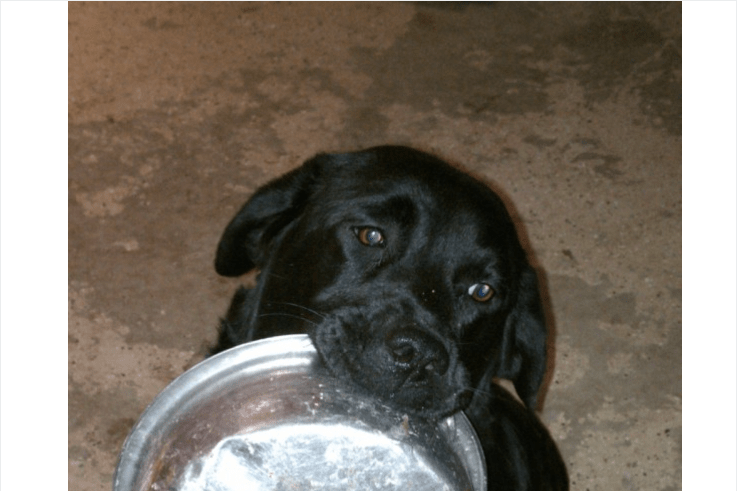

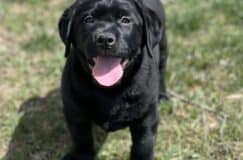
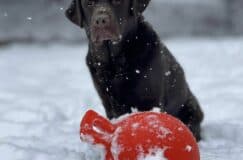
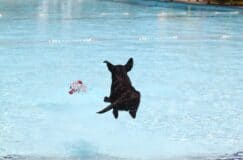

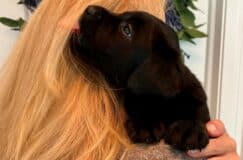
5 Comments